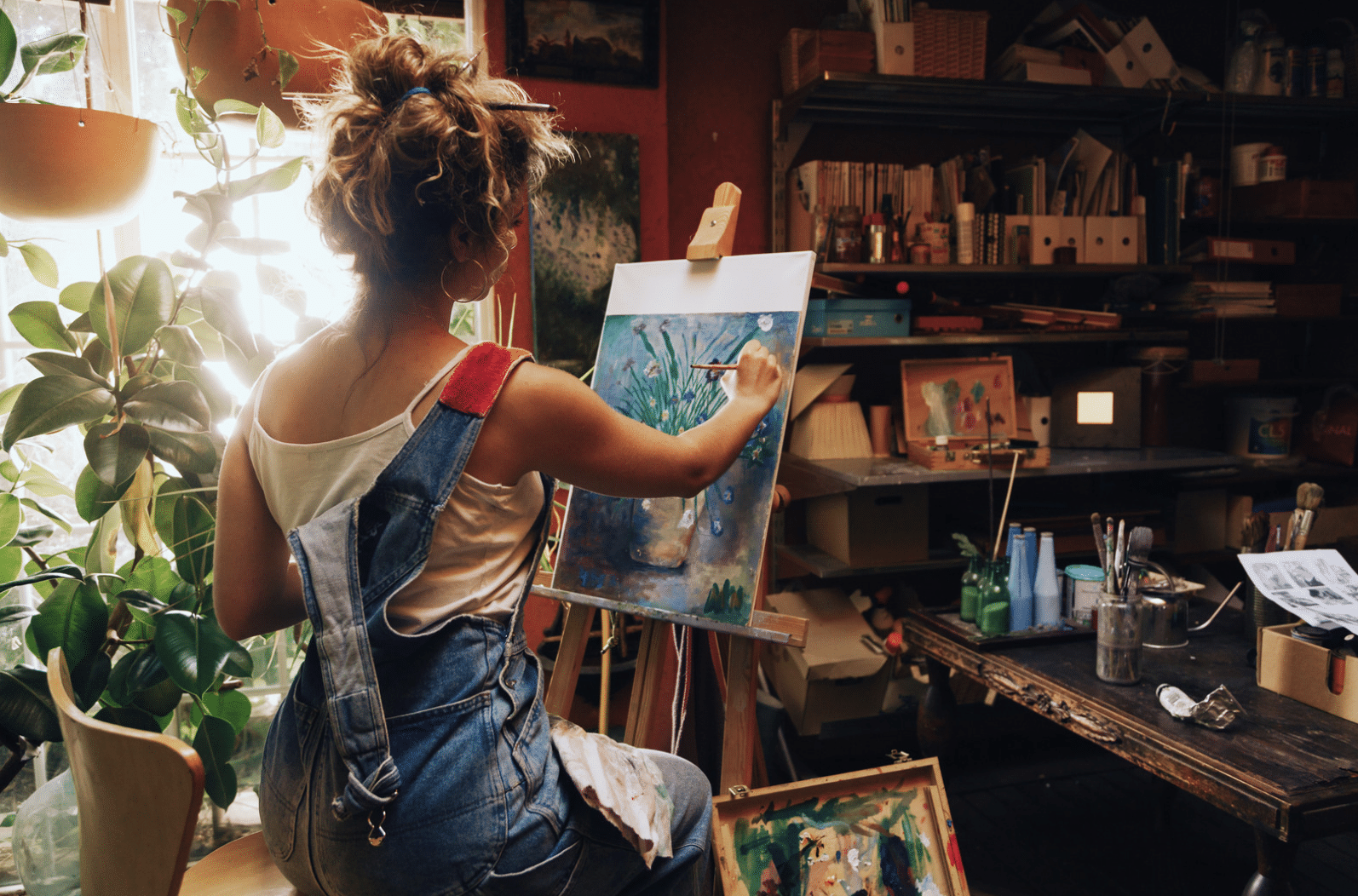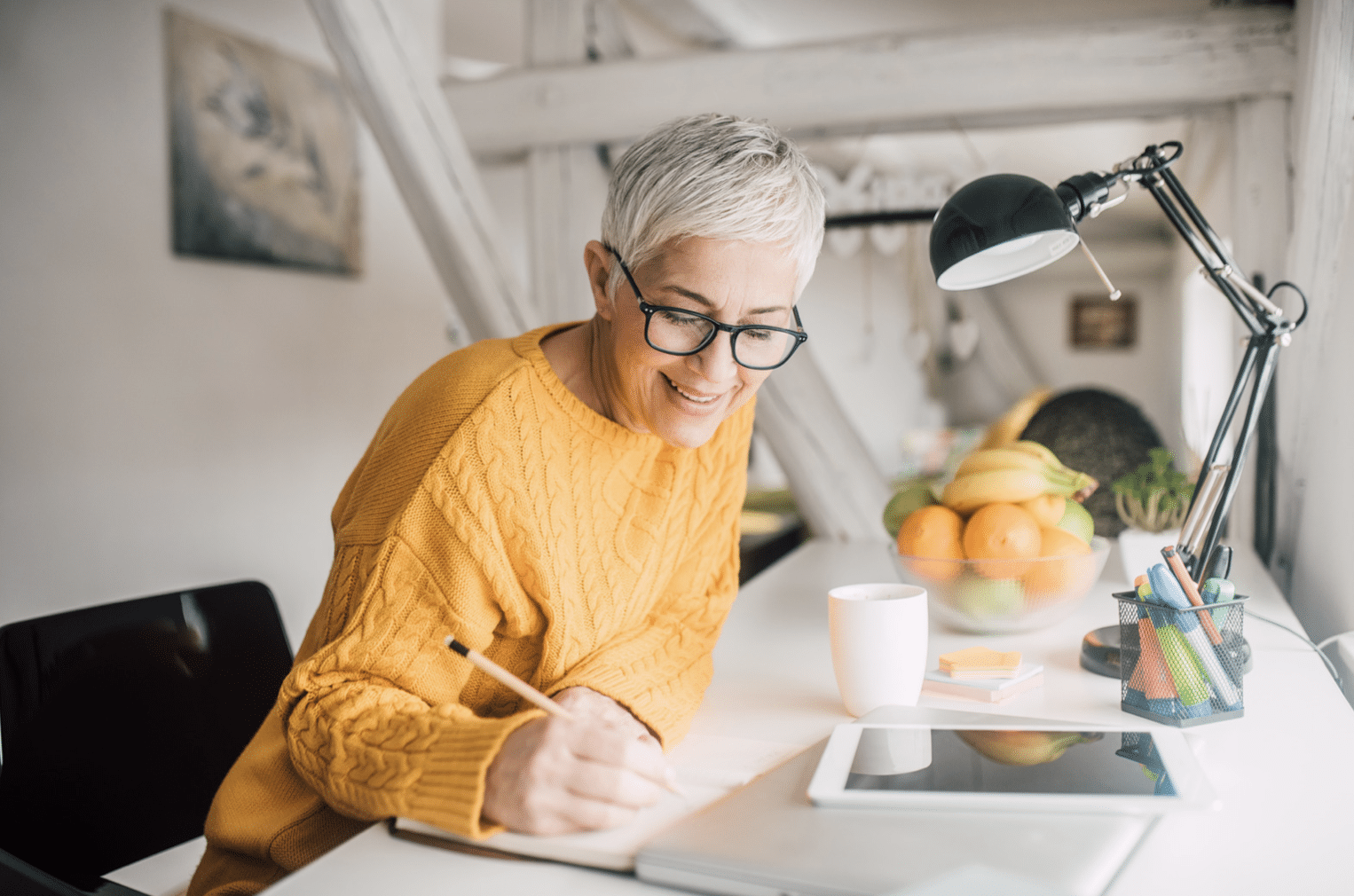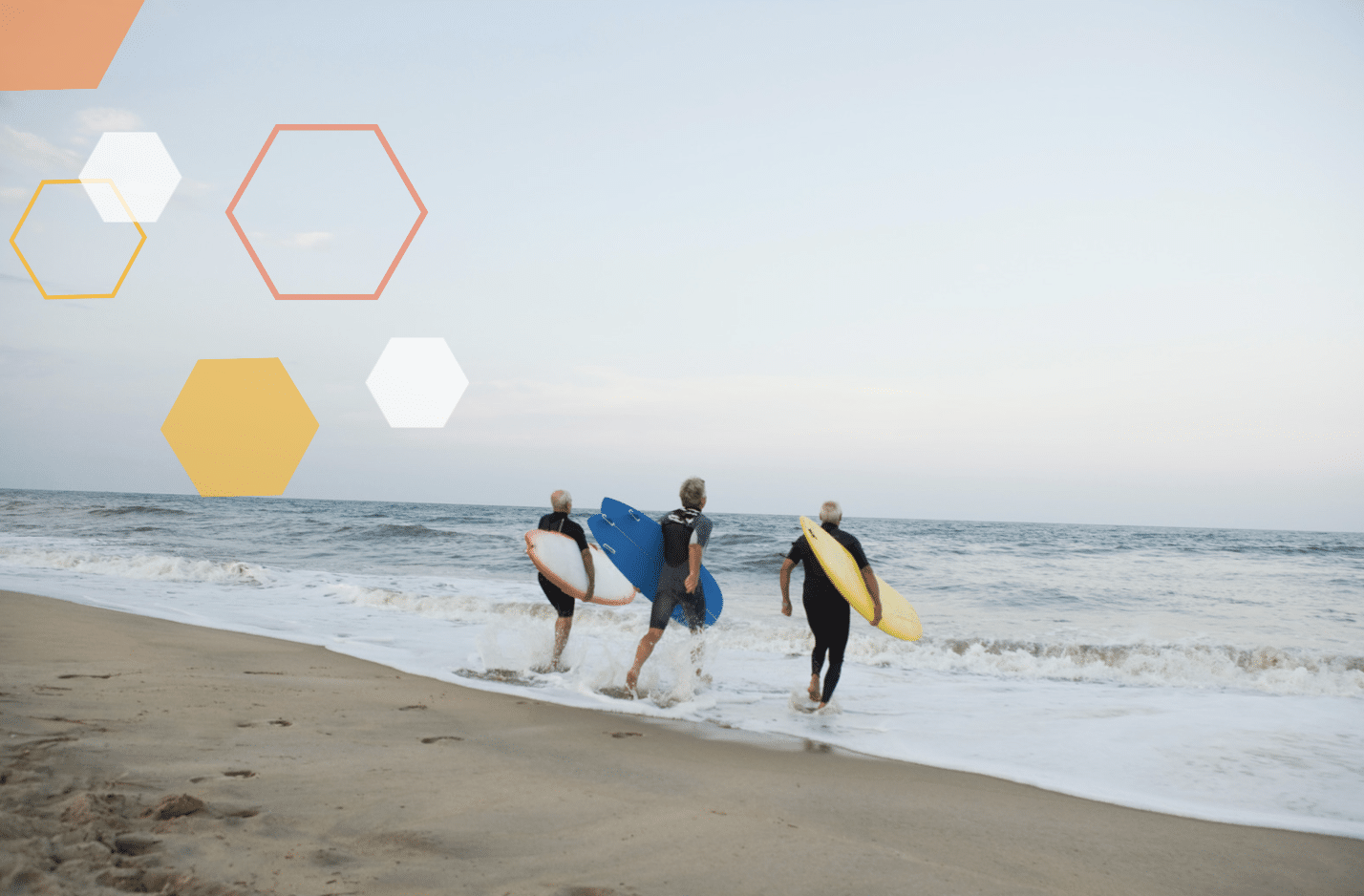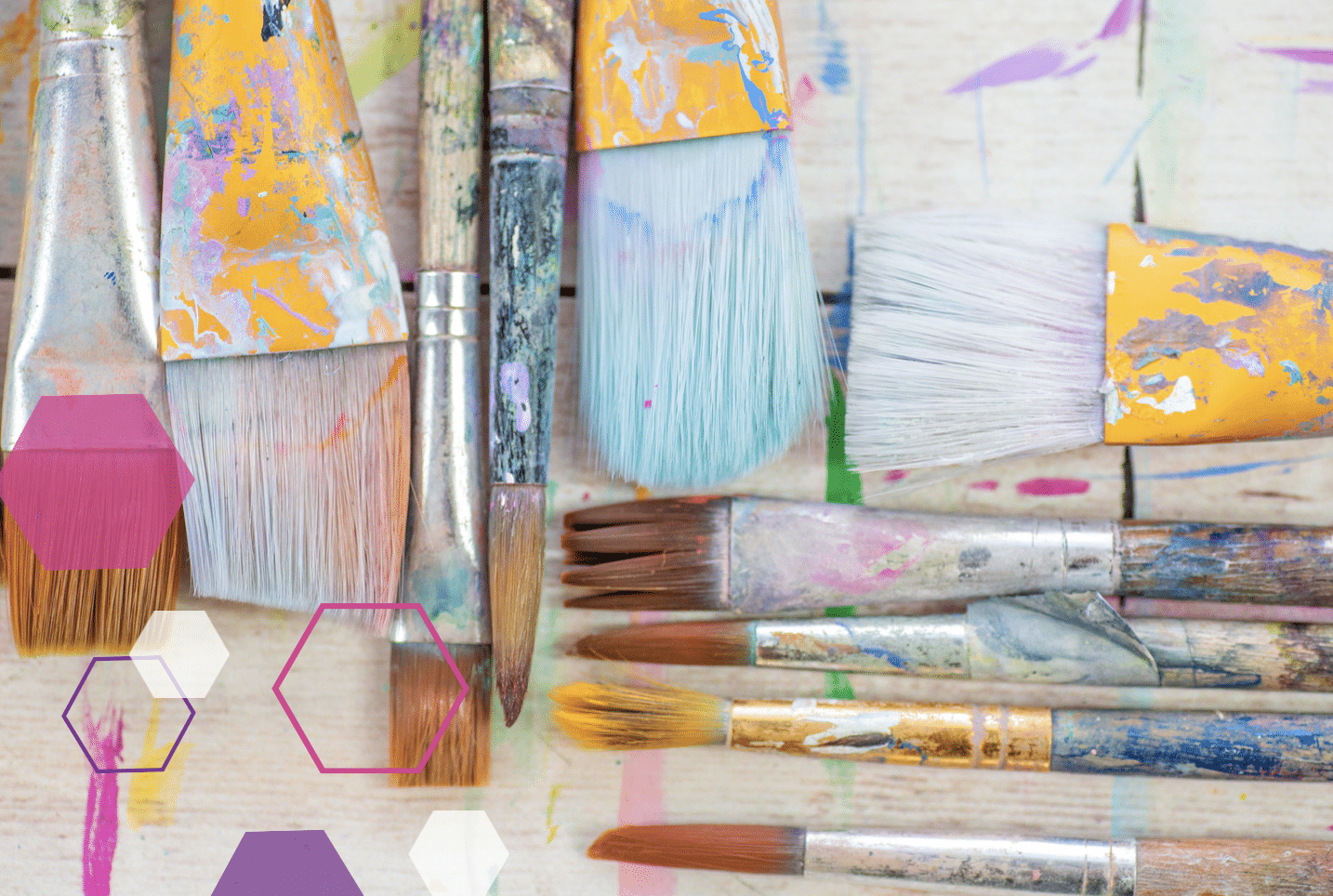Has someone ever told you that you’re more of a left or right brain?
The expression comes from the fact that the left side of our brains handles what we usually consider to be logical things — like reading and math. Meanwhile, the right side is associated with visual learning, images, and processing information more intuitively or creatively.
While many of us naturally prioritize the logical side of our brains, nourishing our creative side also has important intellectual wellness benefits.
Even if you don’t feel the need to be more creative, here’s why you should still take time to cultivate your creativity — for your brain health.
What are the benefits of creativity?
Boosts your brainpower and brain health
You can level up your brainpower by taking up a variety of creative pursuits. One of these is creating music, so listen up, aspiring musicians! A 2014 review using MRIs to look at brain connectivity found that playing a musical instrument improves connectivity between the brain’s two hemispheres, which is vital to preventing cognitive deterioration.¹
Not musically inclined? You can try art for similar benefits. Studies have also found that making art improves communication between different parts of the brain.² Research found that creative acts enhance memory by exercising the medial temporal lobes, which are responsible for memory-making.
Another study on people 85+ years old found that those who took on a craft-based project in midlife and beyond had a 45% less chance of developing cognitive issues like dementia,³ which means that now is the best time to start getting creative!
If arts and crafts or playing music isn’t up your alley, consider taking to the stage. One study found that people who participated in theater performances exhibited better cognitive functioning, including improved problem-solving abilities.⁴ Plus, they also saw an improvement in their psychological well-being after just four weeks. Break a leg to help your brain?
Helps people deal with trauma
Research has found that creative projects help people deal with trauma.⁵ The review specifically looked at the health effects of playing an instrument, creating art, dancing, and creative writing.
Using the creative side of their brain helped people process difficult emotions and experiences. Another study looked at expressive writing for male survivors of childhood abuse. It found that writing (paired with therapy) helped them process and make sense of their trauma.⁶
You don’t necessarily have to write about your trauma to experience the benefits of expressive or creative writing. One study of 81 people looked at the impact of writing about trauma compared to writing about life goals for 20 minutes each day.⁷ They found that writing about your best self was associated with a significant increase in well-being. Plus, it was less upsetting than writing about trauma.
And five months after writing, researchers found that writing either about your trauma, your best possible self, or both was associated with decreased illness. Similar research on people who only wrote about intensely positive experiences also found that doing so enhanced their mood.⁸
The bottom line is that writing and using the creative part of your brain to do so helps people feel better emotionally.
This is true for physical trauma too. According to research, creative activities such as crafting art help the brain recover from various illnesses or disorders, injuries, and stress.

Improves physical health
In one study of people living with chronic pain, researchers had participants express their anger constructively or write about their goals in a nonemotional letter format.¹⁰ Over nine weeks, those who expressed their feelings through writing experienced a greater improvement in control over pain and depressed mood because it helped lead to meaning-making.
Listening to music also has immune system-boosting effects. Research has found that when music is transmitted through the brain, it stimulates the limbic system and moderates the response to stressful stimuli.¹¹ Good news for music fans who don’t have any interest in learning how to play.
How do I start being creative?
Observe creativity
If you don’t know where to start, know that just being in the vicinity of others’ creativity makes you more creative, according to the American Journal of Public Health.¹² Researchers found that observing the creativity of others by attending concerts or visiting museums, for example, allows people to reap meditative benefits.
Start a regular journaling practice
Start your day with a free writing session. It doesn’t have to be long — even just 10 minutes is a great way to get started. Jot down anything that comes to your mind, from the mundane to the profound. Set a timer and let yourself go for it.
Keeping a journal by your side for doodling breaks is also an easy way to allow yourself to take creative breaks.

Take a virtual or in-person class
The best time to start is now. So if you’ve always wanted to master the piano or finally learn how to use watercolor paint, consider signing up for a class or lessons. Start by checking out your local YMCA.
If you prefer virtual learning, online courses, including Skillshare, Coursera, and Udemy, are great options. YouTube is also a great free resource for everything from learning how to knit to cooking.
Consider picking up knitting needles
Speaking of knitting, the research on knitting is reason enough to call out this creative hobby specifically. One study looking at 3,500 knitters found that frequent knitters felt happier and calmer and had higher cognitive functioning. ¹³ Plus, the researchers found that knitting with others has psychological and social benefits that contribute to well-being and quality of life.
Get moving
You can get your creative juices flowing by moving your body since regular exercise is linked to more creative and innovative thinking, according to research published in Frontiers and Nature: Scientific Reports.¹⁴,¹⁵ Researchers found that study participants with a consistently active lifestyle were more creative than those who were sedentary.
And there’s no need for intense workouts to get this benefit. Researchers showed no difference in creativity levels between people who exercised moderately versus vigorously.

Build in time for creativity
The easiest way to ensure you nourish your creativity is by making time and scheduling opportunities. Remember, there’s strength in numbers. Host a craft night for your friends and family to get the extra benefits of socializing. Tell everyone in your circle to bring one craft they know how to make, and teach it to the rest. Friendship bracelets, origami, and even doing each other’s nails are some great ideas.
Embrace messiness
Trying something new and anything creative, like writing and making art or music, means accepting the process. Your first time doing paper-mache, baking a lemon meringue pie, or whatever you choose will likely not be perfect.
Just like anything else, it takes time and practice. And the point is to embrace the process, have fun, and savor the experience more than the finished product.
References:
-
- https://www.mdpi.com/2076-3425/4/2/405
- https://journals.plos.org/plosone/article?id=10.1371/journal.pone.0101035
- https://n.neurology.org/content/84/18/1854
- https://journals.sagepub.com/doi/abs/10.1177/0898264304265819?url_ver=Z39.88-2003&rfr_id=ori:rid:crossref.org&rfr_dat=cr_pub=pubmed
- https://www.ncbi.nlm.nih.gov/pmc/articles/PMC2804629/
- https://psycnet.apa.org/record/2006-23054-004
- https://journals.sagepub.com/doi/abs/10.1177/0146167201277003
- https://www.sciencedirect.com/science/article/abs/pii/S0092656603000588
- https://www.ncbi.nlm.nih.gov/pmc/articles/PMC3944420/
- https://link.springer.com/article/10.1007/s10865-008-9149-4
- https://www.researchgate.net/publication/222133804_Music_Listening_to_Facilitate_Relaxation_and_Promote_Wellness_Integrated_Aspects_of_Our_Neurophysiological_Responses_to_Music
- https://www.ncbi.nlm.nih.gov/pmc/articles/PMC2804629/
- https://journals.sagepub.com/doi/abs/10.4276/030802213X13603244419077
- https://www.frontiersin.org/articles/10.3389/fnhum.2013.00824/full



